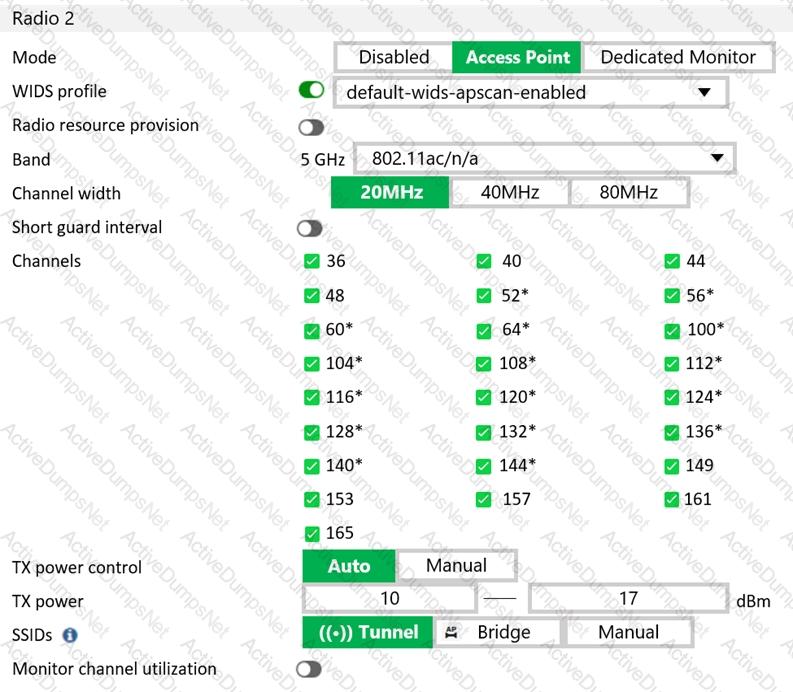Fortinet NSE6_FWF-6.4 Fortinet NSE 6 - Secure Wireless LAN 6.4 Exam Practice Test
Fortinet NSE 6 - Secure Wireless LAN 6.4 Questions and Answers
When configuring Auto TX Power control on an AP radio, which two statements best describe how the radio responds? (Choose two.)
Which statement is correct about security profiles on FortiAP devices?
Which two statements about background rogue scanning are correct? (Choose two.)
Which two statements about distributed automatic radio resource provisioning (DARRP) are correct? (Choose two.)
A tunnel mode wireless network is configured on a FortiGate wireless controller.
Which task must be completed before the wireless network can be used?
Refer to the exhibit.

What does the asterisk (*) symbol beside the channel mean?
When using FortiPresence as a captive portal, which two types of public authentication services can be used to access guest Wi-Fi? (Choose two.)
When enabling security fabric on the FortiGate interface to manage FortiAPs, which two types of communication channels are established between FortiGate and FortiAPs? (Choose two.)
As standard best practice, which configuration should be performed before configuring FortiAPs using a FortiGate wireless controller?
How can you find upstream and downstream link rates of a wireless client using FortiGate?
